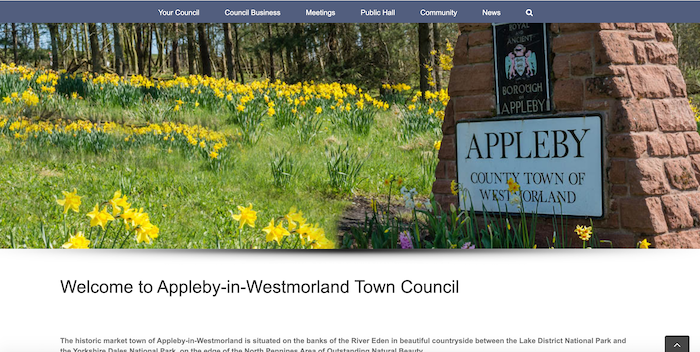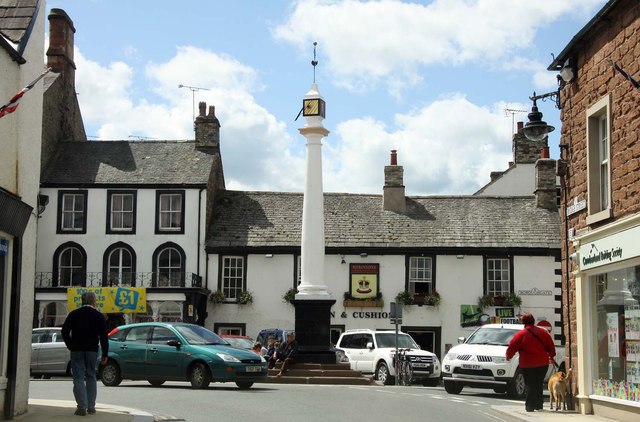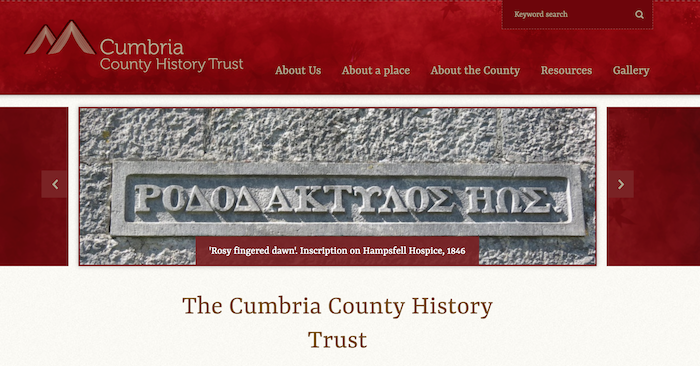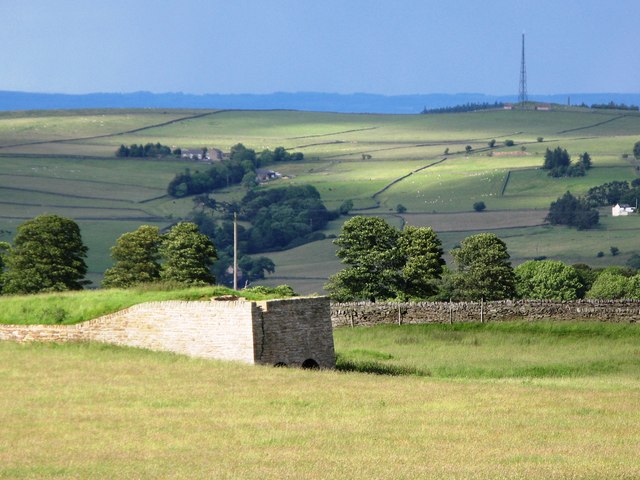Topics > Civil Parishes in Cumbria > Appleby-in-Westmorland Town Council area
Appleby-in-Westmorland Town Council area
Parish boundaries may have changed - for the latest map see the Town Council or Westmorland & Furness Council.
About the Parish
| Main Settlements: |
Appleby-in-Westmorland (town) |
| Population: |
3,228 (2021 Census) 3,048 (2011 Census) 2,862 (2001 Census) |
| Area: | 7.6 km2 |
| Parish Council: | Appleby-in-Westmorland Town Council |
| Unitary Authority: | Westmorland & Furness Council |
| Ceremonial County: | Cumbria |
Historical |
|
| Market Town & Ancient Borough |
Borough - Boroughgate planned town, granted borough status in 1179. Incorporated Market Town - charter of c.1174: cattle fairs every fortnight from Whitsuntide to Michaelmas, held on the Sands. Superceeded by the 'New Fair' from the C18th, held in June on Gallows Hill, which became largely a horse fair. |
| Acient Townships |
Bongate Township (in St Michael's Parish) Scattergate Township (in St Lawrence's Parish) These townships were not within the ancient borough. Townships became civil parishes in their own right in 1866 (see below). |
| Ancient Parishes: |
Appleby St Lawrence (St Lawrence) Appleby St Michael Bondgate (St Michael) Ancient parishes refer to the parishes before the split between ecclesiastical (church) and civil parishes in the 19th century. They had a parish church and often were composed of multiple townships and chapelries. In many cases, townships and parishes were originally based on the territory of manors from the feudal system during medieval times. Civil parishes were created following the Poor Law Amendment Act 1866, in which Church of England parishes, extra-parochial areas, townships and chapelries, became "civil parishes" which could set their own poor rate (tax). Then the reforms of Local Government Act 1894 established elected civil parish councils (or parish meetings for parishes with less than 300 residents) and created urban and rural districts. Boundaries of parishes and civil parishes may have changed over time. |
| Ancient District: |
East (ward) |
| Poor Law Union: |
East Ward Poor Law Union, formed in 1836. East Ward Union Workhouse was located in Kirkby Stephen, using the existing workhouse there. Under the Poor Law Amendment Act of 1834 parishes were grouped into Unions, each of which had to build a workhouse if they did not already have one. It ended the old system of locally provided poor relief which had come under strain as numbers out of work grew, following increasing mechanisation of agriculture and the economic downturn after the Napoleonic Wars, along with changing social attitudes. The workhouse provided those unable to support themselves financially with accommodation and work. Inmates were generally segregated into men, women, boys and girls. The workhouse system was abolished by the Local Government Act 1929, but many workhouses lived on as ‘Public Assistance Institutions’ until the National Assistance Act 1948. |
| Post 1866: |
Appleby Municipal Borough, created 1885 absorbing:
Bongate Civil Parish absorbed into the Municipal Borough in 1908. |
| County: |
Westmorland, until 1974, then: Cumbria, which was created on the 1st of April 1974, following the Local Government Act 1972. The new county absorbed Cumberland and Westmorland, and added some parts of Lancashire and the West Riding of Yorkshire. At this time, Appleby changed it's name to Appleby-in-Westmorland, preserving the former county in it's name. Appleby had been the county town of Westmorland since 1177. Cumbria County Council was abolished in 2023 and replaced by 2 new Unitary authorities. Cumbria remains a ceremonial county; retaining ceremonial boundary and the roles and responsibilities of the Lord Lieutenant and High Sheriff of Cumbria - based on 'The Cumbria (Structural Changes) Order 2022'. |
|
District Council: |
Appleby Municipal Borough (1885 - 1974) Eden District (1974 - 2023) Created by the Local Government Act 1972. Eden absorbed parts of Cumberland (Penrith Urban District, Alston with Garrigill Rural District and Penrith Rural District), and parts of Westmorland (Appleby Municipal Borough, part of Lakes Urban District and North Westmorland Rural District). Eden and the 5 other district councils of Cumbria, along with the county council, were abolished as part of local government reorganisation in 2023; and replaced by two unitary authorities on 1st April 2023 |
|
Unitary Authority: |
Westmorland & Furness Council was created on the 1st April 2023. The 'new' Cumberland unitary authority area includes most of the historic county, with the exception of Penrith and it's surrounding area, which is part the 'new' Westmorland and Furness unitary authority. |
See also: ![]() Historic Buildings and Monuments in Appleby-in-Westmorland. Note: listed buildings are generally the responsibility of the county council / unitary authority, rather than the parish council.
Historic Buildings and Monuments in Appleby-in-Westmorland. Note: listed buildings are generally the responsibility of the county council / unitary authority, rather than the parish council.

from https://applebytown.org/
Appleby-in-Westmorland Town Council
- "The historic market town of Appleby-in-Westmorland is situated on the banks of the River Eden in beautiful countryside between the Lake District National Park and the Yorkshire Dales National Park, …
Added by
Simon Cotterill

Co-Curate Page
Appleby-in-Westmorland
- Overview About Appleby Map Street View Appleby-in-Westmorland is a market town and civil parish in the Eden district, in the county of Cumbria, in North West England. It is …

Co-Curate Page
Appleby, 1848
- APPLEBY, an incorporated market-town, having separate jurisdiction, and formerly a representative borough, locally in East ward, union of East ward, county of Westmorland, of which it is the chief town, …

from https://www.cumbriacountyhist…
Appleby
- "Borough, market town and county town of Westmorland, in East ward, Westmorland. This entry covers medieval borough itself (Boroughgate; in Appleby St Lawrence parish) and townships of Bongate (in Appleby …
Added by
Simon Cotterill

from https://aw-history.co.uk/file…
Medieval Fact Sheet - Appleby in Westmorland
- Pdf by Adrian Waite - ".....Appleby was originally two separate towns. The first was established by Scandinavian settlers on high ground on the east bank of the Eden at the …
Added by
Simon Cotterill


from https://applebytown.org/
Appleby-in-Westmorland Town Council
- "The historic market town of Appleby-in-Westmorland is situated on the banks of the River Eden in beautiful countryside between the Lake District National Park and the Yorkshire Dales National Park, …
Added by
Simon Cotterill

Co-Curate Page
Appleby-in-Westmorland
- Overview About Appleby Map Street View Appleby-in-Westmorland is a market town and civil parish in the Eden district, in the county of Cumbria, in North West England. It is …

Co-Curate Page
Appleby, 1848
- APPLEBY, an incorporated market-town, having separate jurisdiction, and formerly a representative borough, locally in East ward, union of East ward, county of Westmorland, of which it is the chief town, …

from https://www.cumbriacountyhist…
Appleby
- "Borough, market town and county town of Westmorland, in East ward, Westmorland. This entry covers medieval borough itself (Boroughgate; in Appleby St Lawrence parish) and townships of Bongate (in Appleby …
Added by
Simon Cotterill

from https://aw-history.co.uk/file…
Medieval Fact Sheet - Appleby in Westmorland
- Pdf by Adrian Waite - ".....Appleby was originally two separate towns. The first was established by Scandinavian settlers on high ground on the east bank of the Eden at the …
Added by
Simon Cotterill









